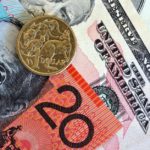
Yesterday’s trade (in GMT terms) saw GBP/USD within the range of 1.2602-1.2762. The pair closed at 1.2616, plummeting 1.05% compared to Wednesdays close. It has been the 190th drop in the past 354 trading days and also the steepest one since September 16th. The daily low has been a level unseen since June 1985. The major pair has increased its slump to 2.79% so far during the current month, after losing 1.23% in September.
At 7:00 GMT today GBP/USD was losing 1.36% on the day to trade at 1.2444.
During the early phase of the Asian session today the pair briefly plunged about 10% from a daily high of 1.2625 to a low of 1.1378. However, Thomson Reuters, the owner of the RTSL platform, explained later that the outlying trade had not been taken into account, after which it revised the daily low to 1.1491. It has been a level not seen since March 1985.
The Sterling has recently been under ongoing pressure on concerns over a “hard Brexit”, following UK PM Theresa Mays statement that Article 50 of the Lisbon Treaty may be triggered by the end of March next year. Yesterday May made remarks regarding the impact of Bank of Englands accommodative monetary policy, which according to Reuters, some analysts perceived as a “thinly veiled attack” on the central bank.
On Friday GBP/USD trading may be influenced by the following macroeconomic reports and other events as listed below.
Fundamentals
United Kingdom
Balance of Trade
The deficit on United Kingdom’s visible trade balance (goods only) probably narrowed to GBP 11.30 billion in August, according to market expectations, from GBP 11.76 billion in July.
The deficit on United Kingdom’s total trade balance narrowed to GBP 4.502 billion in July from a revised up shortfall of GBP 5.573 billion in June, as exports rose and imports shrank.
During the month, total exports rose 1.9% to reach GBP 43.8 billion. July’s performance was mostly influenced by a 3.4% surge in shipments of goods. Exports of ships went up by GBP 0.5 billion, those of oil rose GBP 0.4 billion, while aircraft shipments shrank GBP 0.5 billion.
Total imports dropped 0.5% to reach GBP 48.3 billion during the same period, dragged down mostly by a 0.9% decrease in imports of goods. Purchases of automobiles fell GBP 0.3 billion.
In case the UK visible trade deficit narrowed more than anticipated in August, this would have a moderate-to-strong bullish effect on the Sterling, because of positive implications regarding the nation’s economic growth. The Office for National Statistics (ONS) will release the official trade data at 8:30 GMT.
Industrial, Manufacturing Production
Annualized industrial production in the United Kingdom probably expanded for a fifth consecutive month in August, according to market expectations, at a pace of 1.3%. In July, the index of industrial output rose 2.1% year-on-year, or at the sharpest rate since April. In monthly terms, industrial production probably went up 0.1% in August, according to expectations, following another 0.1% increase in July. Within the index, the gauge of mining and quarrying surged 4.7% in July, the index of oil and gas extraction soared 5.6%, while the gauge of manufacturing fell 0.9%, or at the steepest monthly rate in a year. The index of industrial output measures the change in the total inflation-adjusted value of production in sectors such as manufacturing, mining and utilities. Consistent rates of increase in industrial production suggest inflation pressure build-up.
United Kingdom’s annualized manufacturing production, an indicator which accounts for almost 80% of the nation’s industrial output, probably grew 0.9% in August, according to the median forecast by analysts. If so, this would be the fifth consecutive period of expansion. In July, manufacturing output rose at an annualized rate of 0.8%. In monthly terms, manufacturing production probably rebounded in August after three successive months of contraction, going up 0.5%, according to the median estimate by experts. As it is a key component of the country’s Gross Domestic Product, in case annual manufacturing production expanded more than projected in August, this would have a moderate bullish effect on the Sterling. The Office for National Statistics (ONS) will release the official industrial report at 8:30 GMT.
GDP estimate by the NIESR
At 14:00 GMT the National Institute of Economic and Social Research (NIESR) will release its estimate in regard to UK Gross Domestic Product over the three months to September. During the three-month period to August the NIESR estimate pointed to a 0.3% GDP growth, or matching the estimate from the previous period. It has been the lowest projection since the three-month period to April 2016 (+0.3%). The report is considered as highly reliable and usually heightens volatility of the pairs containing the Sterling
United States
Fed speakers
At 14:30 GMT Federal Reserve Vice Chair, Stanley Fischer, is to take part in conversation on the economy and federal regulation at the Institute of International Finance Annual Membership Meeting in Washington.
At 16:45 GMT the Fed President for Cleveland and also a FOMC member, Loretta Mester, is to speak on “Fed Communications” at the Shadow Open Market Committee Fall Luncheon Meeting in New York.
At 20:00 GMT Federal Reserve Board Governor, Lael Brainard, is to take a statement on “Blockchain Technology” at the Institute of International Finance Annual Membership Meeting in Washington.
Any remarks in regard to the Bank’s future policy or US macroeconomic environment would heighten USD volatility.
Meanwhile, the International Monetary Fund and the World Bank Group will hold Annual Meetings in Washington on October 7th to October 9th.
Non-farm Payrolls, Unemployment Rate, Average Hourly Earnings
Employers in all sectors of economy in the United States, excluding the farming industry, probably added 175 000 new jobs in September, according to the median forecast by experts, after a job gain of 151 000 in August. July’s figure has been revised up to 275 000 from 255 000 reported previously.
Employment in food services and drinking places rose by 34 000 in August, in health care and social assistance – by 36 000, in professional and technical services – by 20 000 and in financial activities – by 15 000. On the other hand, the US mining industry lost 4 000 jobs in August, employment in manufacturing dropped by 14 000, while in construction – by 6 000.
Total non-farm payrolls account for 80% of the workers, who produce the entire Gross Domestic Product of the United States. In case of a higher-than-expected gain in jobs in September, demand for the US dollar would be strongly supported.
Average Hourly Earnings probably increased 0.2% in September compared to the prior month, according to market expectations, following a 0.1% gain to $25.73 in August. If expectations were met, September would be the seventh consecutive month of earnings increase.
Meanwhile, the rate of unemployment in the country probably remained at 4.9% for a fourth straight month in September, according to market expectations.
The total number of people unemployed remained almost unchanged at 7.8 million in August. Among major groups, the unemployment rates for adult men (4.5%), adult women (4.5%), teenagers (15.7%), Whites (4.4%), Blacks (8.1%), Asians (4.2%), and Hispanics (5.6%) changed little or not at all in August.
The number of long-term unemployed (those looking for employment for 27 weeks or more) remained almost unchanged at 2.0 million during August and comprised 26.1% of the unemployed, according to the BLS. At the same time, the number of persons in part-time employment for economic reasons (involuntary part-time workers) was little changed as well at 6.1 million in August.
In case the unemployment rate met expectations or even fell further, this would have a bullish effect on the US Dollar, because of positive implications for consumer spending. The Bureau of Labor Statistics will release the official employment data at 12:30 GMT.
Bond Yield Spread
The yield on UK 2-year government bonds went up as high as 0.172% on October 6th, or the highest level since September 15th (0.207%), after which it closed at 0.148% to add 2.4 basis points (0.024 percentage point) compared to October 5th.
Meanwhile, the yield on US 2-year government bonds climbed as high as 0.858% on October 6th, or the highest level since June 3rd (0.899%), after which it fell to 0.854% at the close to add 1.6 basis points (0.016 percentage point) compared to October 5th.
The spread between 2-year US and 2-year UK bond yields, which reflects the flow of funds in a short term, narrowed to 0.706% on October 6th from 0.714% on October 5th. The October 6th yield spread has been the lowest one since October 4th, when the difference was 0.700%.
Daily, Weekly and Monthly Pivot Levels
By employing the Camarilla calculation method, the daily levels of importance for GBP/USD are presented as follows:
R1 – 1.2631
R2 – 1.2645
R3 (Range Resistance – Sell) – 1.2660
R4 (Long Breakout) – 1.2704
R5 (Breakout Target 1) – 1.2755
R6 (Breakout Target 2) – 1.2776
S1 – 1.2601
S2 – 1.2587
S3 (Range Support – Buy) – 1.2572
S4 (Short Breakout) – 1.2528
S5 (Breakout Target 1) – 1.2477
S6 (Breakout Target 2) – 1.2456
By using the traditional method of calculation, the weekly levels of importance for GBP/USD are presented as follows:
Central Pivot Point – 1.2984
R1 – 1.3053
R2 – 1.3127
R3 – 1.3196
R4 – 1.3264
S1 – 1.2910
S2 – 1.2841
S3 – 1.2767
S4 – 1.2692
In monthly terms, for GBP/USD we have the following pivots:
Central Pivot Point – 1.3113
R1 – 1.3312
R2 – 1.3645
R3 – 1.3844
R4 – 1.4042
S1 – 1.2780
S2 – 1.2581
S3 – 1.2248
S4 – 1.1914





